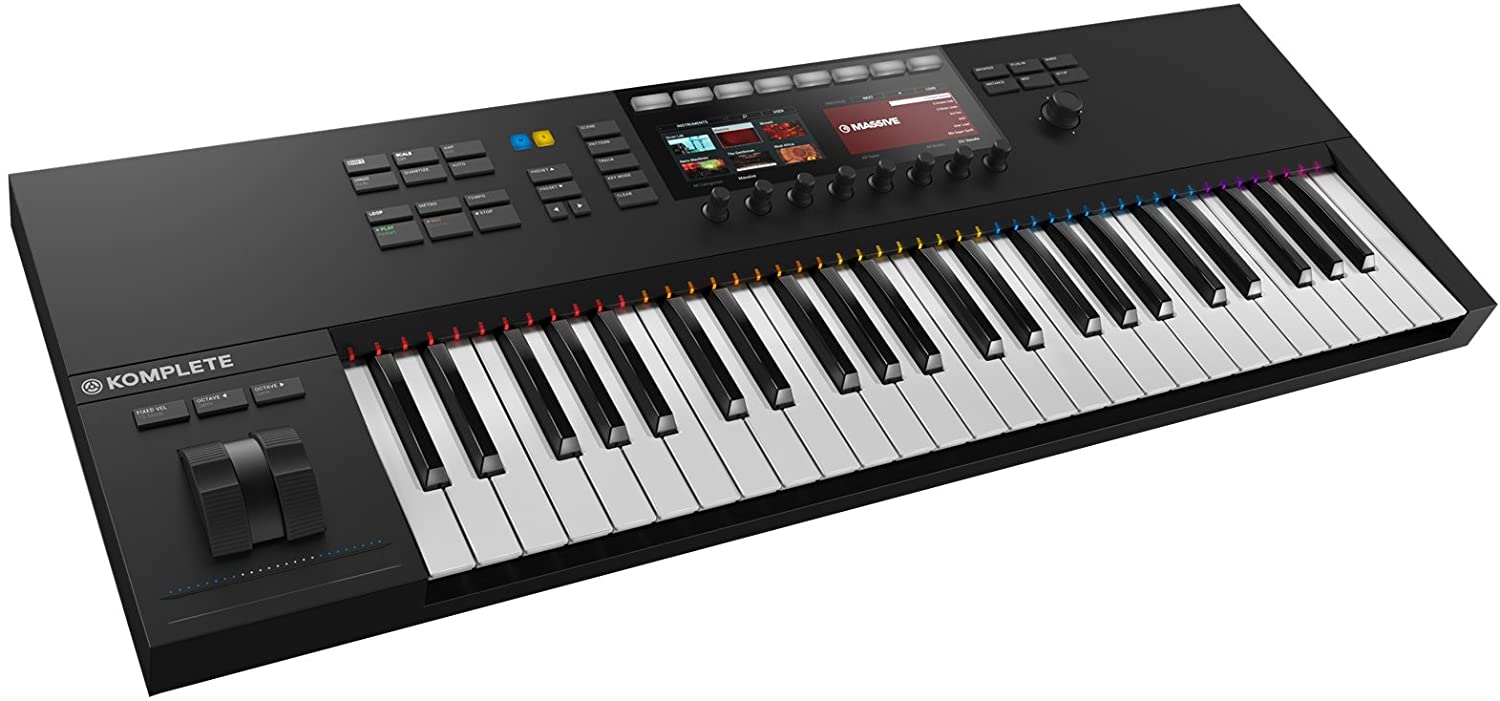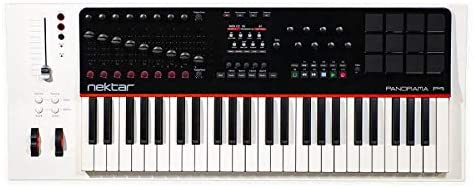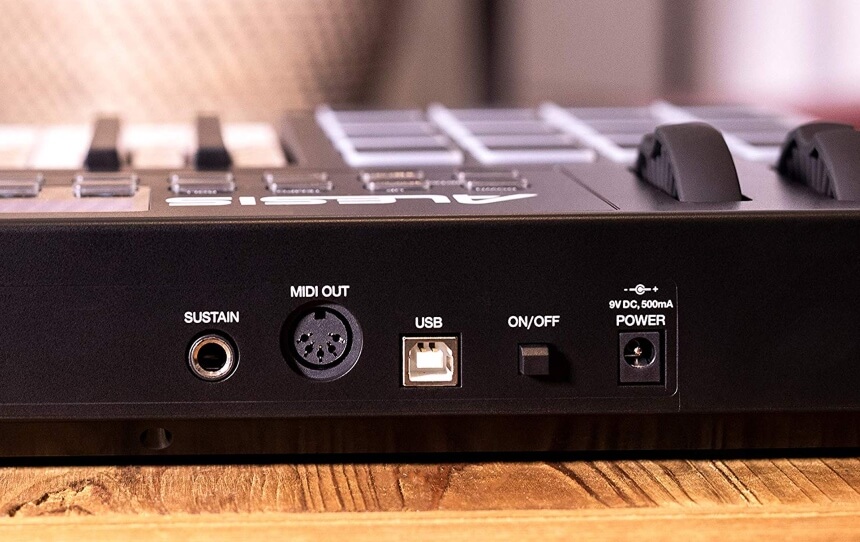
Without a doubt, Steinberg Cubase is one of the most powerful digital audio workstations (DAW) on the market. Whether for film dubbing, music and language productions, extensive audio recordings, or beat production in the box, the Hamburg DAW giant's battleship is so vast that it has the right features for all possible applications.






Of course, all these functions can be operated with a keyboard and mouse. Still, the music production software can be used with controllers much more comfortably while also improving your creativity. Finding the best MIDI controller for Cubase might not be an easy task. This is why we have compiled a list of the top-rated models with the Akai Professional MPK249 as our Editor's Choice.
In addition to DAW controllers, which mainly focus on mixdown and editing, the market is also packed with controller keyboards, with which effects, sound generators of the DAW, and also third-party plugins can be conveniently. Do you wish to learn more? Let's get started!
| № | Name | Rating | |
|---|---|---|---|
| 1 | Akai Professional MPK249 |
9,9
|
Check price |
| 2 | Native Instruments Komplete Kontrol S49 MK2 |
9,8
|
Check price |
| 3 | M-Audio Keystation 49 MK3 |
9,6
|
Check price |
| 4 | Akai Professional MPD218 |
9,2
|
Check price |
| 5 | Nektar Panorama P4 |
9,1
|
Check price |
| 6 | MIDIPLUS AKM320 |
9,0
|
Check price |
| 7 | Nektar Impact LX49+ |
8,8
|
Check price |
| 8 | Arturia KeyLab 49 MKII |
8,6
|
Check price |
| 9 | Alesis VI25 |
8,5
|
Check price |
| 10 | Novation Launchkey 49 MK2 |
8,4
|
Check price |
More features: MPC mainstay controls included, onboard pitch bend, modulation and octave controls, 1 assignable footswitch jack, and 1 expression jack

In our opinion, the AKAI MPK249 is the best MIDI controller for Cubase. The series includes a multilingual quick start guide, a 39.3” long USB cable, and an extensive software package. Also, detailed instructions are available for download on the AKAI website. The software package includes Ableton Live Lite and MPC Essentials. With both, you can get started right away and produce your first tracks. This also includes the software instruments Hybrid 3 from Air Music Tech and the synthesizer Twist from SoniVox.
In addition to 16 pads, rotary knobs, and function keys, the AKAI MPK249 comes with velocity-sensitive and easily playable pads, all of which can be assigned several functions. The keyboard is much easier to play than its predecessor, and thanks to the transport section, including the HID function, many functions can be controlled with it. But the AKAI MPK249 can also be used very well live. The various possibilities of the MPK, an internal arpeggiator, and a preview function ensure that hardware and software instruments can be controlled easily and remotely.
More features: 4-directional push encoder, two high-res color screens, intuitive DAW control

With Komplete Kontrol MK2, Native Instruments have expanded their two-part network system with useful workflow accelerators and a clearer operating concept. The new high-resolution displays replace the confusing older ones and combine them with control elements that enable improved integration of DAW and Komplete Kontrol software. This allows direct access to the DAW mixer, quantization of the recordings, and the undo function. Compared to current concepts from other manufacturers, the Komplete Kontrol lacks the control of effect plugins to be really “complete”. If you are looking for a controller keyboard to control sound generators, the Komplete Kontrol MK2 is a harmonious combination of hardware and software.
More features: sustain pedal input, compatible with iOS devices, compact design, USB-powered

The keys of the MK3 49 from M-Audio are touch-sensitive, offer a compact design, and are to be delivered by the manufacturer with an extensive software package. The Keystation 49 MK3 has directional and full transport control.
The package includes a software package consisting of DAW Avid Pro Tools First, M-Audio Edition, and the Multi-membrane workstation Xpand. Additionally, you get Ableton Live Lite – DAW, AIR music technology, Mini Grand – virtual pianos, AIR Music Technology Velvet – virtual electronic pianos, Skoove – interactive online piano lessons, Melodics -introductory software for MIDI keyboards, and 2 GB high-quality samples of touch loops (loops, one-shots, and sound elements).
More features: 18 fully assignable 360-degree potentiometers, iOS connectivity

By including the MPC control with its simple USB connection, the MPD218 combines the feeling of the classic drum machine with the world of computer-based music production.
The MPC pads are very sensitive and react immediately to the user’s input. The MPD218 offers six rotary controls in three banks in contrast to only one control element on the previous series. Thus, this enables you to get the best sound out of it and to have precise control over the effects. MIDI data is transmitted to the Mac or PC via the USB interface without even having to install a driver. The MPD218 is only supplied with power via USB – all that is needed is the cable that you can find in the kit.
The MPD series is also iOS compatible via the Camera Connection Kit (available separately). A software package is also included.
More features: 3.5” TFT color display, connects via USB to Windows and OSX, 5 different velocity curves, includes Nektar DAW Integration software

The Nektar Panorama is ,first of all a USB / MIDI keyboard controller with a large number of programmable elements. It has a keyboard that is easy to play. Even on its own, the keyboard impresses us with four zones and flexible configuration options. In connection with one of the compatible DAWs Reason, Cubase/Nuendo, Logic/GarageBand, or Bitwig Studio, the Panorama can fully demonstrate its strengths. It is deeply integrated into the respective software, shows parameters in plain text on the high-resolution display, and enables very comprehensive remote control of the DAWs.
With the motorized fader, you always have access to the level of the current track without having to fetch the value. The Instrument Mode contains pre-configured mappings for all instruments contained in the compatible DAWs and a growing number of plugins from other manufacturers so that the laborious manual assignment of controls can often be omitted. This makes the Nektar Panorama one of the most comprehensive controller solutions currently available for users of Reason, Cubase, Logic, or Bitwig Studio.
More features: sustain pedal port, USB-B connection, compact size

The Midiplus AKM320 is a compact keyboard that manages to have modulation wheels as well as pitch bend. It features transpose buttons, a master volume slider, and an octave up and down. But it doesn’t come with bundled software. The controllers include the volume slider, transpose buttons, octave, modulation wheels, and pitch.
The MIDI keyboard for Cubase features 32, keys and it has a simple and clean overall design. The keyboard controller doesn’t feature many frills. You get what you pay for.
More features: 5 user presets, includes Bitwig 8-track DAW, Mac, PC, and iOS Compatible

This controller is pre-configured for use with Bitwig, Cubase, Digital Performer, Logic, FL Studio, Nuendo, Reaper, GarageBand, Sonar, and Studio One. It is available with 49 velocity-sensitive, dirt-repellent coated buttons. Also, four different velocity curves are ready to adapt to your playing style. Nine faders, nine switches, and eight potentiometers, in combination with the four-color illuminated pads, offer extensive control options for DAWs and plugins.
In addition to the Windows, Mac OS, and Linux operating systems, the MIDI keyboards can also be used in conjunction with an iPad, with the tablet taking over the function of the power source. The package includes the BITWIG 8-TRACK.
More features: LCD display, seamless integration with all Arturia software instruments, presets for multiple DAWs, magnetic overlays for controls

The Keylab MkII from Arturia is a top MIDI controller. The hardware alone is qualitatively in a class of its own. Next, the stability, the feeling of play and use, as well as the quiet usage noises, are unparalleled. On top of that, the perfect software integration with the in-house Analog Lab 3 sound generator is impressive. The availability of a modular synthesizer system via the CV inputs and outputs is the icing on the cake, which is rarely found on a MIDI controller.
With the right quick start guide, DAW integration in Studio One works perfectly. Further controllers are therefore no longer necessary. Arturia’s Keylab MkII is otherwise a complete control center and an all-in-one solution at a very high level.
More features: LED screen, USB-powered, plug-and-play support for Mac and PC

The keyboards of the VI25 have a split mode so that you can assign both areas to different MIDI channels. The transposition and the velocity curve can also be configured separately for both zones.
The pads on the two keyboards feel good, and their touch dynamics inspire creative work with drum samples. Also, they are suitable for several other purposes, e.g., as clip control for Cubase. They can send program changes, which can be very useful in live operation.
With its slim design, a practice-oriented concept, and solid workmanship, the device is a good all-rounder with a good price-to-performance ratio.
More features: sustain pedal 1/4-inch jack socket, 3 characters LED display, USB powered, 3-year warranty

Just like the first generation, the USB controller keyboard is available in three sizes of 25, 49, and 61 keys. So, there should be something for every user and every application. There are, however, no notable differences in terms of the controls. The Launchkey 49 MK2 has a pitch bend and modulation wheel, octave, and track buttons, including a numeric 3-character LED display. Nine faders and the associated button are also included, as well as eight potentiometers, 16 pads, a small transport section, and five function keys.
The 16 pads now have RGB colors, which is not only an eye-catcher. The pads can all be played with velocity, i.e., drum grooves and beats can be played very realistically. Additionally, the stroke is very successful, and despite the relatively small size of the pads of almost 2 x 2 cm, you can handle it well.
The housing of the Launchkey 49 MK2 is made of plastic. So, the keyboard weighs just 8 lbs. The dimensions are 30.51 x 3.5 x 10.62 inches. Without question, the Launchkeys are very good controller keyboards that can come up with good workmanship, a large area of application, as well as MIDI and InControl mode.
A MIDI keyboard for Cubase is a type of technology recently launched to provide certain advantages in the field of music creation. In this section, we’ll give you some tips on how to choose the right MIDI keyboard for Cubase. Also, don’t hesitate to check frequently asked questions after it.

Playing virtual instruments on the keyboard gives you a feeling of “live performance”, of creation in the moment. On top of that, you are able to improvise and try new ideas while recording them on the fly.
It will also allow you to record your MIDI tracks with a more human feeling. Not everything will be super square, stuck on the grid, like when you enter your notes with the mouse.
Before buying a MIDI keyboard for Cubase, it is important to have in mind the main criteria that might affect your experience. Indeed, if some features are undoubtedly a little secondary for most users, others are really crucial in making a choice. To put it simply, you need to answer a few questions before choosing a MIDI controller.

The pads are also used to enter the notes, just like the keys. What are then the difference? Their stroke is much shorter, and the feeling of playing with it is more of the order of “hitting” than of “support”, which makes them ideal for entering notes of percussive elements like those of a drum kit, for example. Afterward, it’s a bit like marshmallows cooked over a wood fire – it depends on taste. Some love it, while others don’t even touch it. Besides, you can also enter drum elements with a regular keyboard. It’s a matter of habit.
All of these options can be a plus in your workflow, depending on the style of music you want to do. For instance, the Akai Professional MPD218 is a excellent pick for making drum patterns.
For a first purchase (and if you don’t do electro), we advise you to just focus on a simple keyboard at the start. You will thus avoid the hassle of configuring all these options, often a little less “plug and play” than a keyboard alone.
MIDI keyboards are often equipped with other controller options like sliders (faders), knobs, or pads. If you need to move parameters “live” like volume or effects, you will need faders and knobs. This especially applies to genres of electro music. For example, you can adjust the volume of a track in real-time with the fader, such as seen on the Akai Professional MPK249, or open a low-pass filter with a potentiometer. Otherwise, if you don’t have to make these settings “live,” you can also move these values afterward, thanks to the automation curves of your computer music software.

The dimensions and weight of the controller is an important criterion, especially for travelers. Lightweight and compact models like the M-Audio Keystation 49 MK3 and the MIDIPLUS AKM320 weigh between 2 to 5 lbs and are easily transportable.
What features do I need? Do you just need a keyboard? Would you like to be able to control the parameters of your instruments via potentiometers or control levels via faders? For instance, you can find models with transport buttons (play/stop/record) to control your DAW. Apart from that, some products offer you to trigger percussion samples with velocity-sensitive pads.
When you are in doubt about additional features, it is better to have too many features than not enough.
Our Editor’s Choice is the Akai Professional MPK249. In addition to its 16 pads, rotary knobs, and function keys, the AKAI MPK249 comes with velocity-sensitive and easily playable pads, all of which can be assigned several functions.
The Native InstrumentsKomplete Kontrol MK2 lacks the control of effect plugins to be really “complete”. If you are looking for a controller keyboard to control sound generators, it is a harmonious combination of hardware and software.
Finally, the M-Audio Keystation 49 MK3 offers the best value for money out of the lot. The keys are touch-sensitive, and it comes with a compact design.
We hope that our guide helped you find a suitable unit for your needs so that you can enjoy the process of creating and mixing your own tracks!